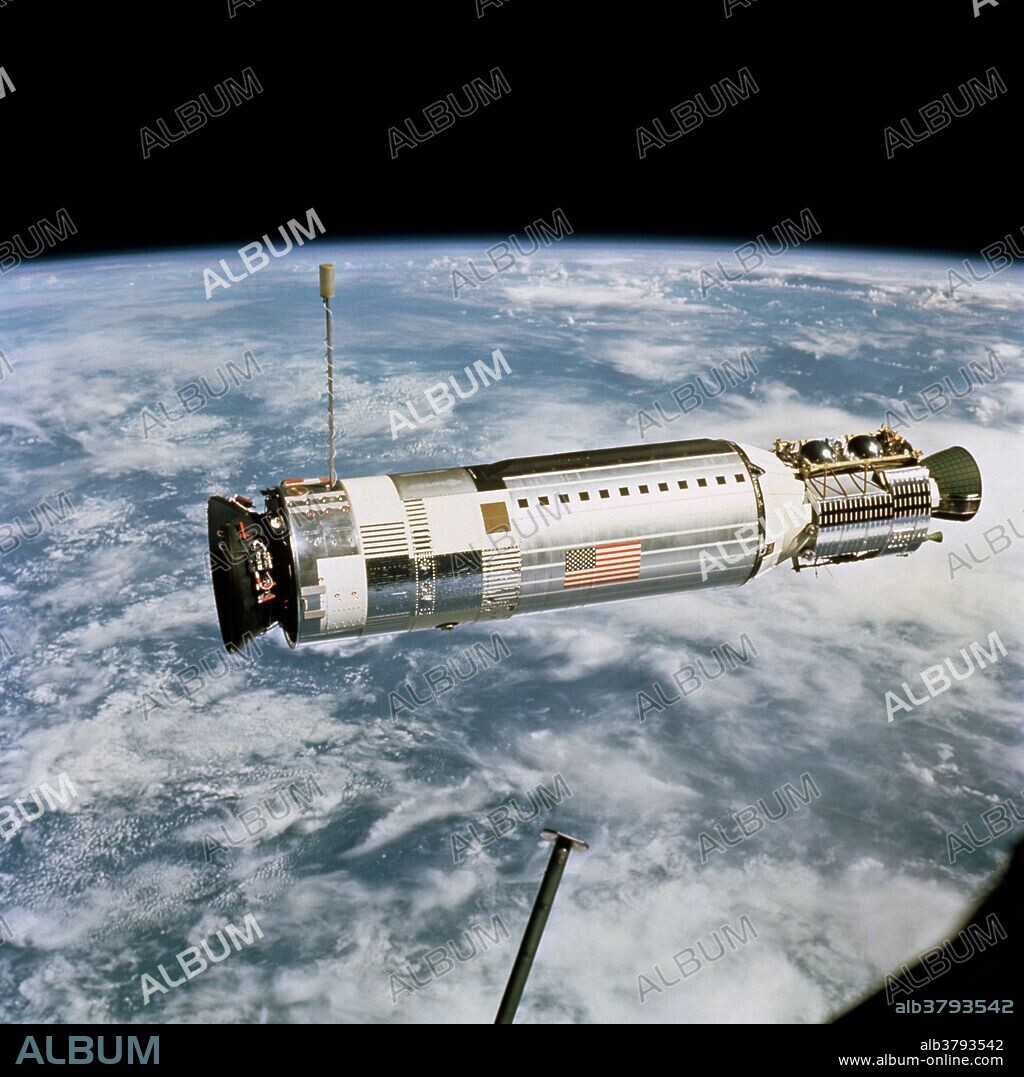alb3793542
Gemini 12, Agena Target Vehicle, 1966

|
Zu einem anderen Lightbox hinzufügen |
|
Zu einem anderen Lightbox hinzufügen |



Haben Sie bereits ein Konto? Anmelden
Sie haben kein Konto? Registrieren
Dieses Bild kaufen.
Nutzung auswählen:

Titel:
Gemini 12, Agena Target Vehicle, 1966
Untertitel:
Siehe automatische Übersetzung
Excellent stereo and side view of the Agena Target Docking Vehicle as seen from the Gemini 12 spacecraft during rendezvous and docking mission in space. The two spacecraft are 50 feet apart. Gemini 12 (officially Gemini XII) was a 1966 manned spaceflight in NASA's Project Gemini. It was the 10th and final manned Gemini flight. Commanded by Gemini VII veteran James A. Lovell, the flight featured three periods of extravehicular activity (EVA) by rookie Edwin "Buzz" Aldrin, lasting a total of 5 hours and 30 minutes. It also achieved the fifth rendezvous and fourth docking with an Agena target vehicle. Gemini XII marked a successful conclusion of the Gemini program, achieving the last of its goals by successfully demonstrating that astronauts can effectively work outside of spacecraft. This was instrumental in paving the way for the Apollo program to achieve its goal of landing a man on the Moon by the end of the 1960s. November 11, 1966.
Bildnachweis:
Album / NASA/Science Source
Freigaben (Releases):
Model: Nein - Eigentum: Nein
Rechtefragen?
Rechtefragen?
Bildgröße:
3750 x 3750 px | 40.2 MB
Druckgröße:
31.8 x 31.8 cm | 12.5 x 12.5 in (300 dpi)
Schlüsselwörter:
1960ER JAHRE • 60ER JAHRE • 60ER • AMERIKANER • BERÜHMT • BERÜHMTE PERSÖNLICHKEIT • EREIGNIS • FORSCHUNG • NASA • NOTABEL • PROMINENZ • QUAD • RAUMFAHRT • RAUMSCHIFF • SECHZIGER JAHRE • TECHNOLOGIE
 Pinterest
Pinterest Twitter
Twitter Facebook
Facebook Link kopieren
Link kopieren Email
Email
